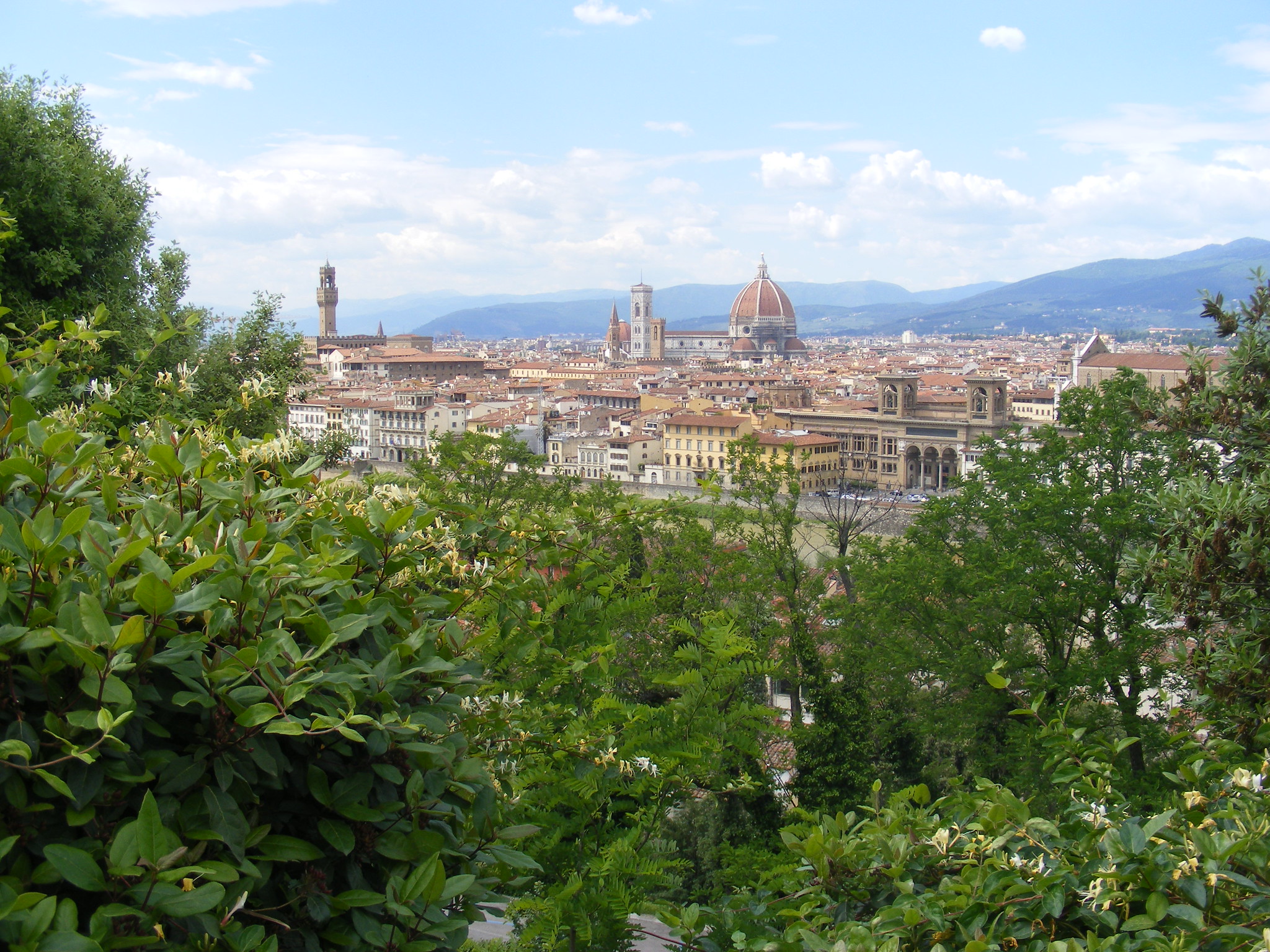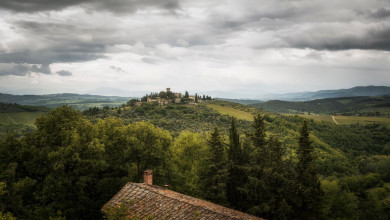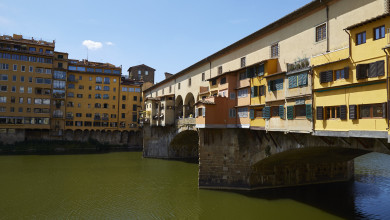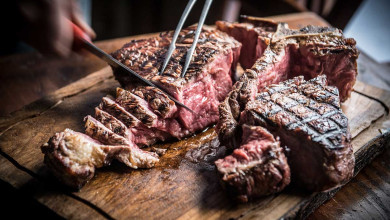Florence: jewel of Central Italy
Guides
Useful info
How To Get Here
Getting to Florence is easy from anywhere since the city is an important rail and road hub. Furthermore, the number of flights from foreign cities and leading airports has increased in recent years.
By car
From Rome (274 Km) or Naples (472 Km) highway A1 will conveniently get you to your destination; exit at Firenze Sud. From Milan (305 Km) the same highway A1 will bring you to Florence going by Bologna (110 Km). From Venice (261 km) and from the Northeast take A13 Padova-Bologna and continue on A1 up to Florence. Those coming from the Tyrrhenian coast, from Genoa, Pisa or Lucca, must take A11 Pisa-Florence.
By train
Florence is situated on the Milan-Rome line, with frequent and rapid connections both ways. From Venice there are two direct connections, otherwise you have to change in Bologna. Florence is connected to Pisa by many direct trains; those coming from Genoa or from the Tyrrhenian coast must usually change in Pisa. For times please consult the Trenitalia website.
By plane
Florence Airport Amerigo Vespucci (FLR) connects with all major Italian airports and 13 European destinations: Amsterdam, Barcelona, Brussels, Bucharest, Frankfurt, Geneva, London Gatwick, Madrid, Monaco, Paris, Timisoara, Tirana and Vienna.
Pisa Airport "Galileo Galilei" (PSA) is the most important in Tuscany: it links the city with major Italian and European destinations. The airport of Pisa is connected to Pisa Central Station by many routes, among which there are eight direct trains from the airport of Florence.

How to get around
Florence is best enjoyed on foot. It's easy to get around its streets and discover secluded corners, porticoes and enchanting courtyards without overlooking the more captivating areas like Piazza della Signoria and Piazza del Duomo. We suggest you forget about driving. There are practically no free parking spaces and it's best to leave your car at one of the large park & ride lots. Moreover, almost all of the center is a restricted traffic area and, if you come by train, the Santa Maria Novella station is right downtown. The green-orange ATAF public buses cover the entire city and are on time, always stopping at the Santa Maria Novella train station. Buses run until 1:50 in the morning. Downtown Florence is not very big and easy to tour by bike since there are many bike racks scattered through the city.
When to go
Florence blossoms in the spring, when the lily, the city's symbol, blooms. Visiting in this period is a real pleasure: the fresh air, clear skies and surrounding green hills enhance the charm of this enchanting city. However, it's peak season and flooded with tourists. We suggest you come in late fall when the weather is still good and you can enjoy a more relaxing yet still exciting vacation. Most of the leading exhibits and shows are held in the winter and, although the days are cold, they're just as exciting.

Tips on where to stay
There is no end of choice of accommodation in Florence. Depending on the budget you have available, you can choose from several options. Let’s look at some of them together.
A stone’s throw from the old city center, you can choose one of the many hotels in Florence, shown in our guide to Florence, for all budgets and needs.
For anyone planning to stay longer, we recommend renting an apartment in Florence or nearby. Many agencies provide a wide range of possibilities, so that you can choose the one most suitable to your needs.
Are you traveling on a tight budget? Don’t worry, there are many Bed & Breakfast in Florence where you can stay without spending too much, and without having to go without service or comfort.
Have you got an even smaller budget? You can stay in a hostel or in any of the campsites near Florence, which don’t cost too much. In winter you can rent a caravan, or you can spend even less by bringing your tent with you during the warm season.
If instead you want to go on trips outside the city and want to set up base in the Chianti hills, why not choose one of the rural country-house near Florence. You can find castles, old farmhouses, farms and country houses that are all perfectly equipped to welcome guests and ready to seduce them with the food and wine specialties of the area.
History
Florence’s origins date back to the Etruscan era, when Fiesole, an important center in Etruria, dominated the valley. Before conquering Fiesole in the first century B.C., the Romans set up camp by the River Arno in a place that then became Florentia, "destined to flower". Florence survived the dark centuries of the Middle Ages and then became an important city, until it became a Municipal Borough in 1115.
The rivalry was famous between the Guelphs, loyal to the Pope, and the Ghibellines, loyal to Emperor Frederick II, which led to the exile of the Guelphs from the city. With the death of the emperor, the Guelphs once again took the upper hand and Florence enjoyed a period of prosperity. Great importance was given to the "Corporazione delle Arti" (Arts Guild) and creation began of works that made Florence a unique city in the world. Art and culture were in turmoil, and the people's desire to educate themselves gave life to the first works in the vernacular language, in the poetic style of "Dolce Stil Novo", after which came Dante, Petrarch, Boccaccio and finally, a century later, the Accademia della Crusta. It was Boccaccio himself who documented the tragedy of the plague in Florence which laid the foundation for popular discontent, reaching its climax during the "Tumulto dei Ciompi", riots that took place in 1378.
Art and culture were in great ferment and the people’s desire to educate themselves gave rise to the first work in the vernacular language, in the poetic style of "Dolce Stil Novo", which then brought about the works of Dante, Petrarca, Boccaccio and finally, a century later, the “Accademia della Crusca”. It was Boccaccio who documented the plague of Florence, a tragedy that started off the people’s dissatisfaction, which culminated in the “tumulto dei Ciompi” riots in 1378.
After a short period in which the people ruled the city, the Medici dynasty then took over, first with Cosimo and then with Lorenzo il Magnifico, who brought the Humanist Age to Florence, together with the wonderful architecture by Brunelleschi. After Lorenzo il Magnifico’s death (1492), and in later centuries, the city oscillated between Republican agitation and Medici revenge, while geniuses such as Michelangelo and Leonardo Da Vinci became famous names in art and literature.
In 1865, Florence was chosen as the capital of the Kingdom of Italy and remained so until 1871. In the following years, until the early twentieth century, the city was known for its literary happenings, with works like Pinocchio bringing writers to the forefront such as Papini, Palazzeschi and Pratolini, who gathered in the historical cafe, "Giubbe Rosse". Florence's population has considerably grown in the nineteenth century, even tripling in the 1900's due to the significant growth in trade, industry and tourism. During the Second World War it was occupied by the Germans from 1943 to 1944 when, in the month of August, it was freed by the Resistance. A leading cultural and economic hub for the entire country in the twentieth century, Florence is now a multiethnic city that optimizes public services and sets a brilliant example of political and administrative innovation, soon to have a subway, a new Sports Arena and multi-purpose Music and Culture center.
Looking for advice on where to stay? Click here to consult the list of establishments registered on Nozio.com and book on their official website at the best conditions!



